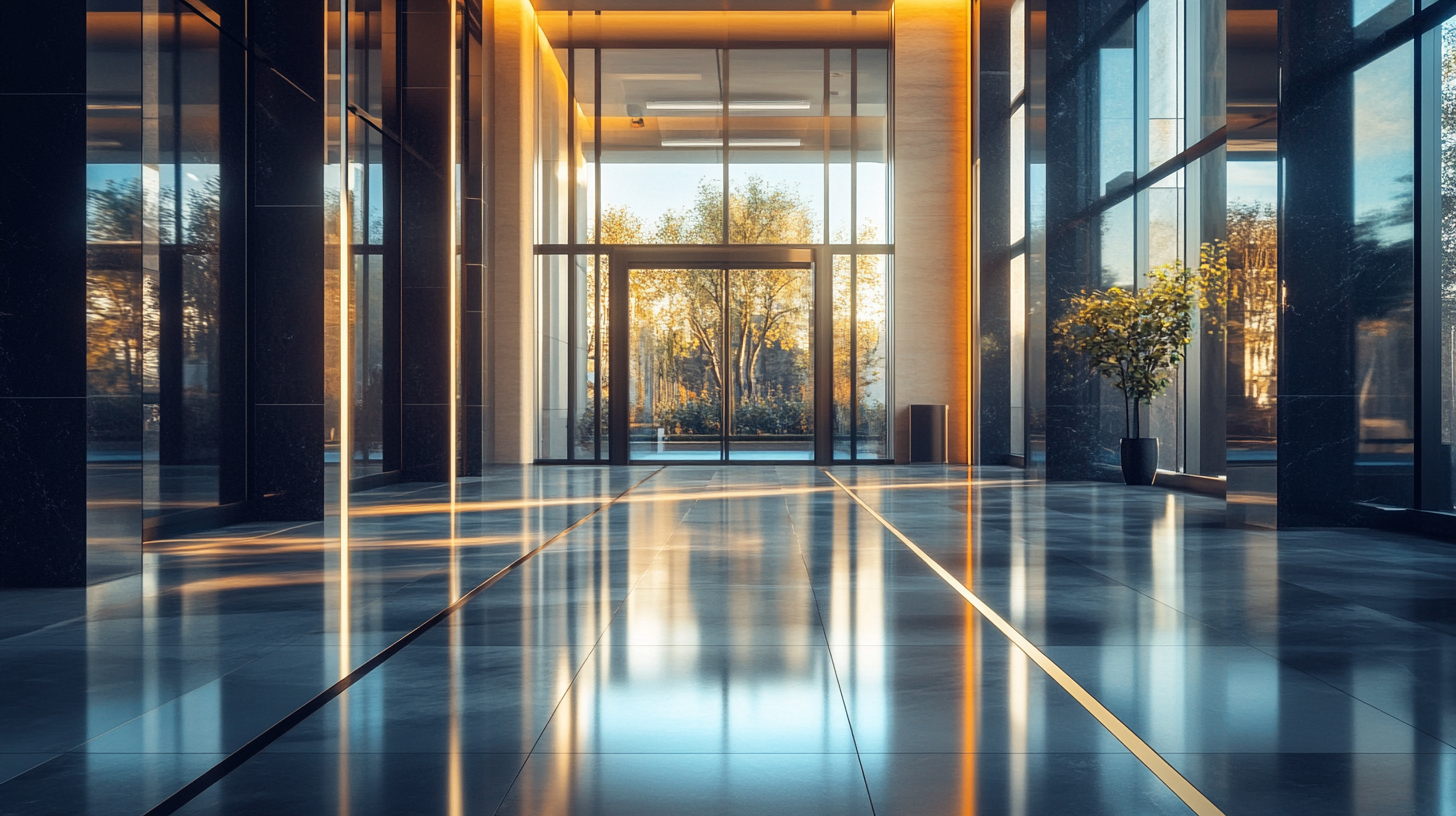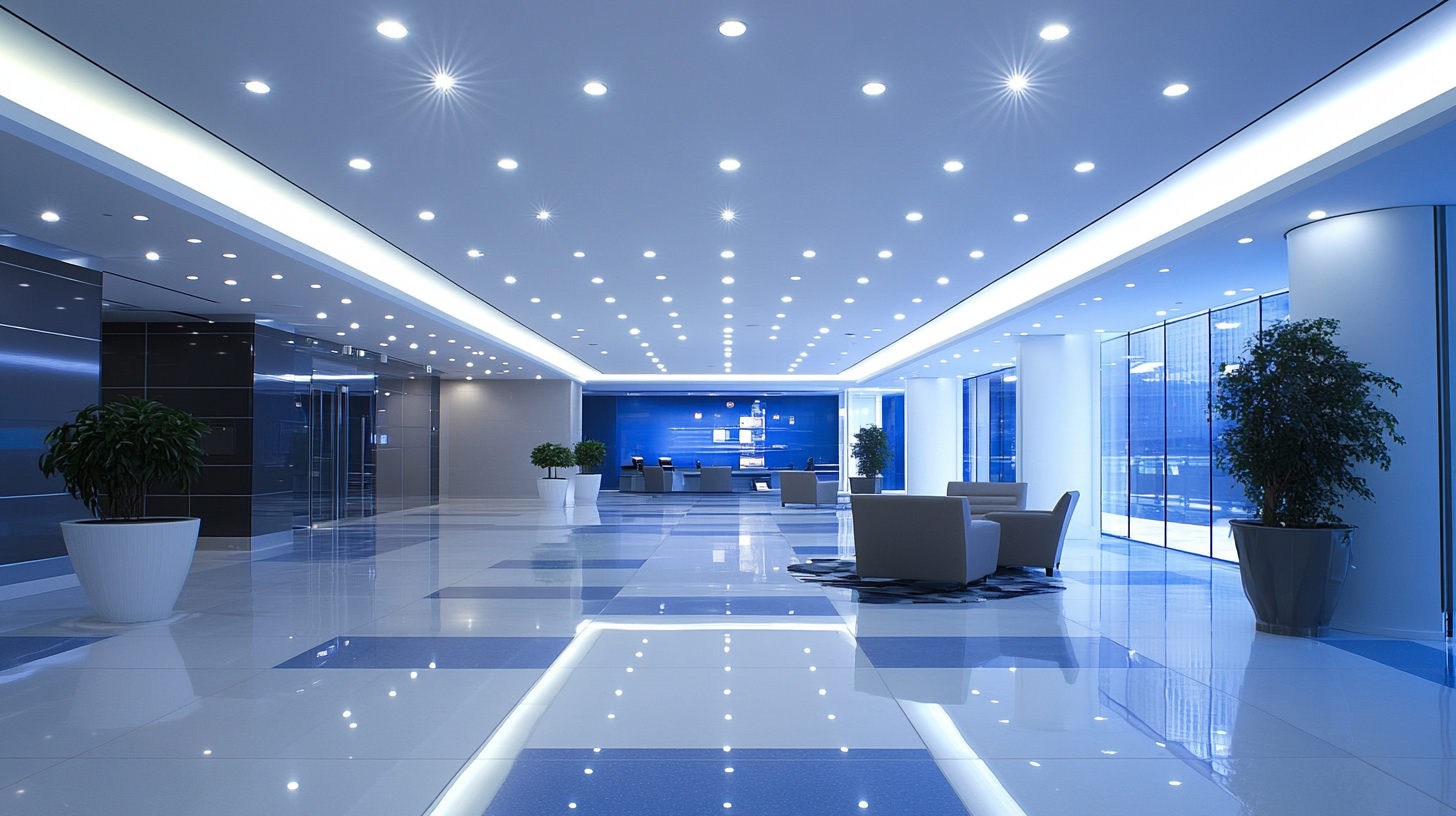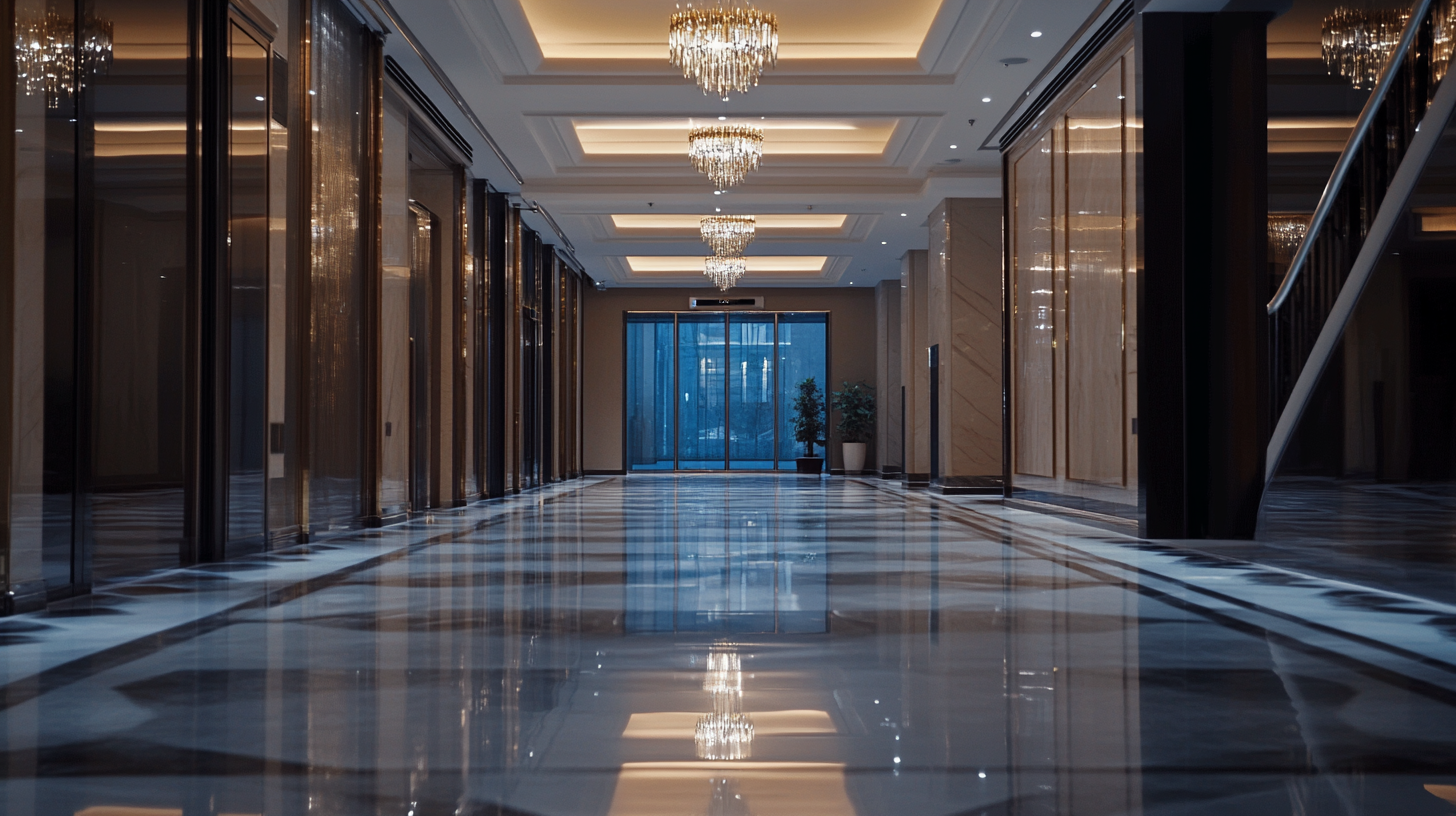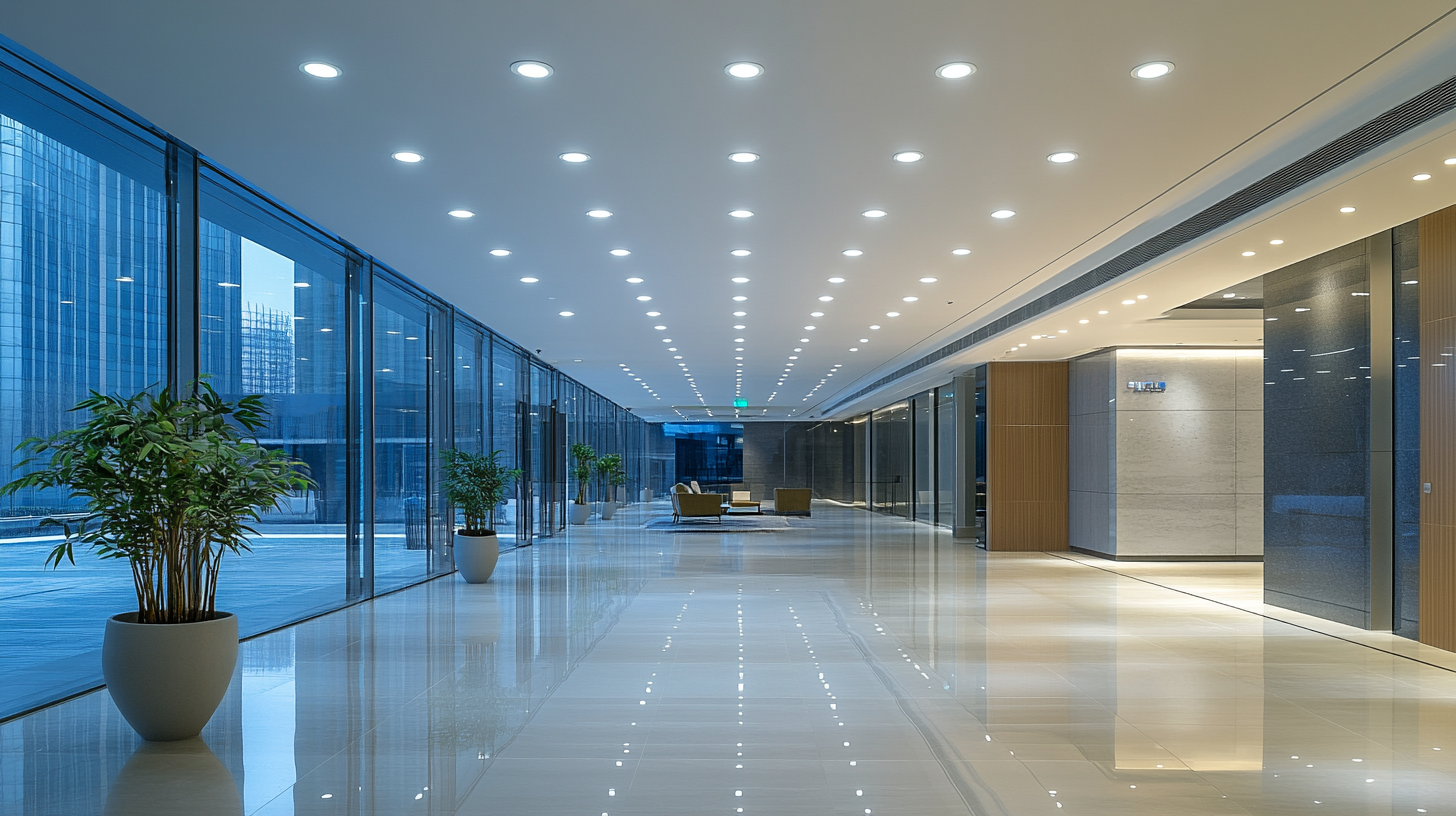10 Essential Insights for Choosing the Right Commercial Lighting Fixtures
In the ever-evolving landscape of commercial spaces, effective lighting plays a crucial role not only in aesthetics but also in enhancing productivity and safety. According to a report by the U.S. Department of Energy, lighting accounts for over 35% of the energy consumed in commercial buildings, highlighting the need for selecting the right Commercial Lighting Fixtures. As businesses look to reduce operational costs and improve energy efficiency, understanding the nuances of modern lighting technology becomes increasingly important.
Moreover, the International Energy Agency has projected that improvements in lighting technology could lead to additional energy savings of up to 30% in commercial settings over the next decade. In this context, choosing the right Commercial Lighting Fixtures can significantly impact both financial and environmental performance. This blog will delve into ten essential insights to guide business owners and facility managers in making informed decisions about their lighting needs, ensuring their spaces are not only well-lit but also optimized for efficiency and sustainability.

Understanding Different Types of Commercial Lighting Fixtures
When it comes to commercial spaces, the right lighting fixtures play a crucial role in creating an inviting atmosphere and ensuring functionality. There are several different types of commercial lighting fixtures, each designed to meet specific needs and aesthetic preferences. Understanding these options can significantly enhance the ambiance and efficiency of any workspace. One common type of commercial lighting fixture is the LED panel light, which provides uniform illumination and is ideal for drop ceilings. These fixtures are energy-efficient and have a long lifespan, making them a cost-effective choice for businesses. Another popular option is track lighting, which offers versatility and allows for targeted illumination. This fixture type is perfect for highlighting artwork, merchandise, or specific areas within a store or gallery. Additionally, pendant lights have gained traction in commercial settings due to their stylish designs and ability to create focal points. They are suitable for dining establishments, lobbies, and cafes, where ambiance and aesthetics are just as important as the lighting itself. For warehouses or large retail spaces, high-bay lights are recommended, as they are designed to illuminate high ceilings and ensure safety in open areas. By understanding these various types of lighting fixtures, businesses can make informed decisions that improve both functionality and visual appeal.

Evaluating Energy Efficiency and Sustainability in Lighting Choices
When selecting commercial lighting fixtures, energy efficiency and sustainability play a crucial role in decision-making. According to the U.S. Department of Energy (DOE), lighting accounts for approximately 15% of the total electricity consumption in commercial buildings. Thus, investing in energy-efficient lighting solutions can significantly reduce operational costs while minimizing environmental impact. Technologies such as LED lighting have emerged as leading options due to their lower energy consumption and longer lifespan compared to traditional incandescent or fluorescent bulbs. For instance, replacing a typical 60-watt incandescent bulb with a 10-watt LED can save more than $55 in energy costs over the bulb's lifetime.
In addition to energy savings, sustainability considerations also encompass the materials and production methods used in lighting fixtures. A report by the International Energy Agency (IEA) highlights that adopting sustainable lighting practices can reduce greenhouse gas emissions significantly. Utilizing fixtures made from recyclable materials can further enhance sustainability efforts. Recent innovations in lighting design focus on using materials that not only meet aesthetic and functional needs but also adhere to sustainable manufacturing practices. This holistic approach ensures that the lighting systems installed in commercial spaces contribute positively to both the environment and the bottom line.
Furthermore, evaluating the total environmental impact of lighting shouldn't stop at energy consumption. Lifecycle assessments, which consider the entire life of a product from raw material extraction to disposal, are becoming increasingly important. By selecting fixtures that are energy-efficient, sustainably produced, and easily recyclable, businesses not only comply with environmental regulations but also appeal to eco-conscious customers and stakeholders. Therefore, the intersection of energy efficiency and sustainability is essential for businesses aiming to not only reduce their carbon footprint but also to promote a responsible brand image in today's environmentally aware market.

The Importance of Designing for Space and Aesthetics
When it comes to selecting commercial lighting fixtures, the importance of space and aesthetics cannot be overstated. A well-designed lighting plan enhances not only the functionality of a space but also its visual appeal. Whether it's a retail store, restaurant, or office, the right lighting can create an inviting atmosphere that draws customers in and keeps them engaged. Understanding the unique characteristics of the space is crucial; for example, high ceilings may require different fixtures compared to compact areas to ensure proper illumination and ambiance.
Aesthetic considerations play a vital role in the selection of lighting fixtures. The style, color, and material of the fixtures should harmonize with the overall design theme of the interior. For modern spaces, sleek and minimalistic designs may be preferred, while vintage or industrial styles could complement more traditional environments. Additionally, the color temperature of the lighting can dramatically affect the perception of the space. Warm tones can promote a cozy atmosphere, ideal for cafes and restaurants, while cooler tones might be more suitable for professional settings where focus and productivity are paramount.
Incorporating both functional and aesthetic lighting elements can transform a commercial space into an experience. Thoughtful layering of light—combining ambient, task, and accent lighting—can enhance architectural features, highlight products, and create focal points that guide customers through the space. By prioritizing the interplay between functionality and design, businesses can ensure their lighting choices not only illuminate but also elevate the overall environment, ultimately influencing customer behavior and satisfaction.

Assessing the Role of Lighting in Enhancing Employee Productivity
The choice of commercial lighting fixtures is pivotal not only for aesthetic purposes but also for enhancing employee productivity. Well-designed lighting can significantly impact how individuals perform at work. According to a 2018 report by the Harvard Business Review, the right lighting can improve concentration and overall job performance by 15%. This is particularly relevant in office environments where the majority of tasks require sustained focus and engagement.
Furthermore, research from the Pacific Northwest National Laboratory shows that optimal lighting conditions can increase productivity by making employees feel more energized and reducing fatigue. Natural lighting, for example, has been correlated with a 20% boost in workplace performance. Organizations that leverage biophilic design principles, integrating natural light into their spaces, have reported not only an increase in productivity but also improved employee morale and satisfaction.
In addition to enhancing performance, appropriate lighting can also reduce errors and accidents on the job. A study conducted by the Lighting Research Center revealed that improper lighting conditions can lead to a 30% increase in workplace errors. Thus, investing in the right commercial lighting fixtures becomes paramount not only for enhancing employee productivity but also for ensuring safety and efficiency within the workplace.
Navigating Budget Constraints While Choosing Lighting Solutions
When selecting commercial lighting fixtures, budget constraints can often dictate choices that might compromise quality and efficiency. According to a report by the U.S. Department of Energy, LED lighting can significantly cut energy usage, with savings of up to 75% compared to traditional incandescent bulbs. While the initial investment in high-quality fixtures may seem daunting, it's crucial to consider long-term operational savings. Choosing more efficient lighting not only reduces electricity costs but can also enhance the workplace environment, leading to improved employee productivity.
Furthermore, understanding the total cost of ownership (TCO) is essential in making an informed decision within budget limitations. A study by the Lighting Research Center found that up to 60% of lighting costs come from energy consumption and maintenance over time. By opting for durable and efficient fixtures, businesses can lower maintenance expenses, which is often overlooked in initial budgeting discussions.
Moreover, many commercial lighting solutions offer rebates or incentives from local utility companies, which can alleviate upfront costs. For instance, leveraging energy-efficient lighting systems can lead to substantial rebates, with some businesses saving upwards of 30% on their lighting upgrades through such programs. As organizations navigate these choices, focusing on value rather than price alone is key, ensuring that the solutions not only fit within budget constraints but also contribute positively to both the financial and aesthetic aspects of the business.

